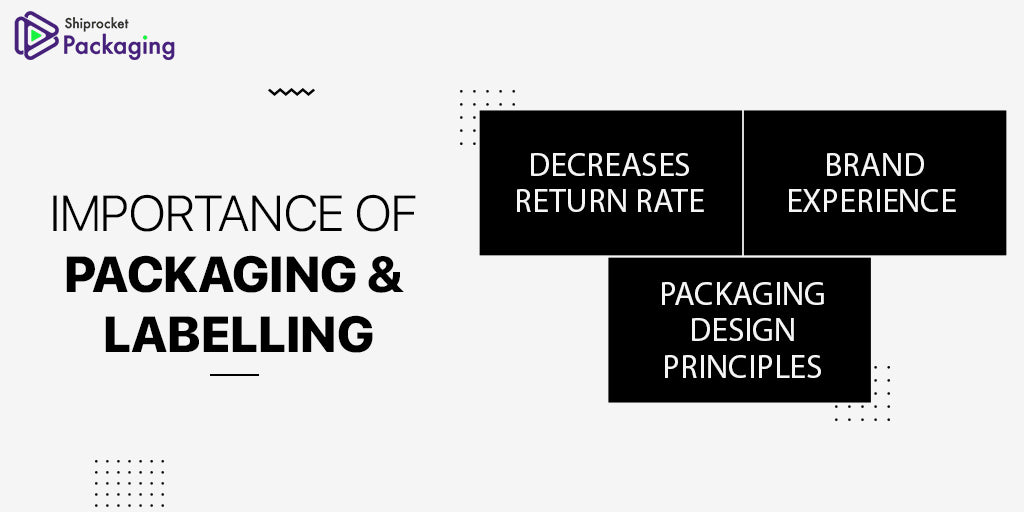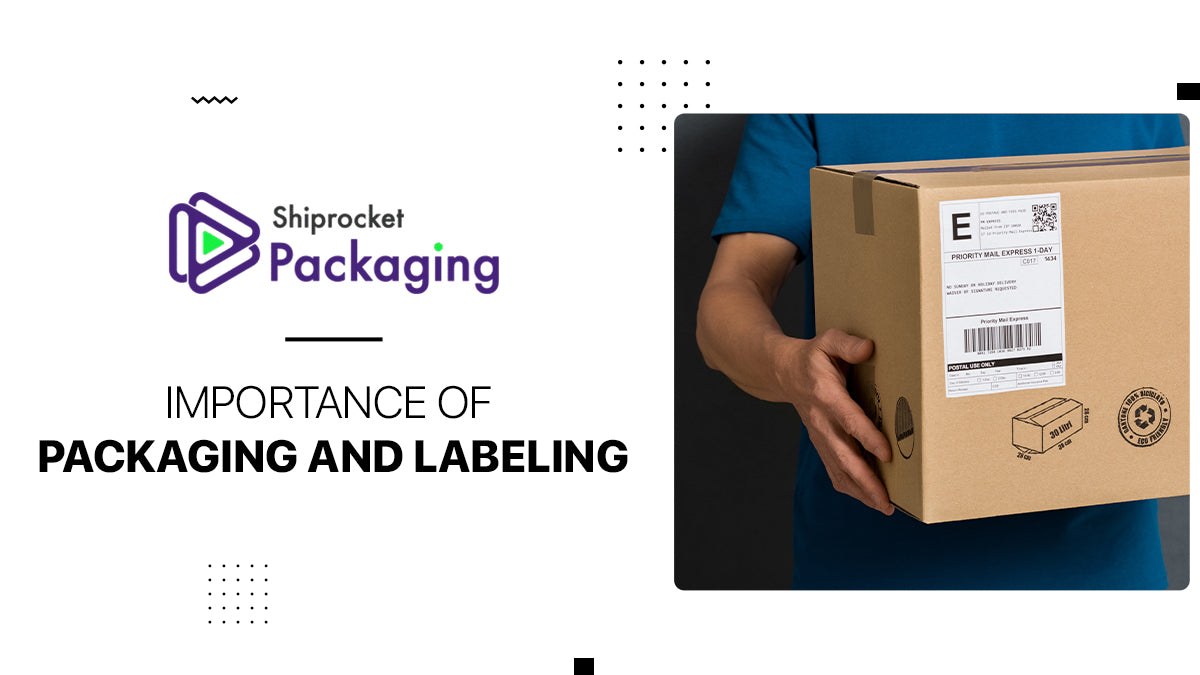Among all aspects of an eCommerce business, there is one aspect that is often over-looked – eCommerce packaging and labelling. While most business owners focus on sales and advertising, packaging and labelling take a back seat.
Packaging and labelling directly impact sales and profits as they offer detailed information on the price, quality, quantity, usage, ingredients, and features of the products. They also display the brand logo and message that help the customer find the product easily by creating a recall value. Notably, packaging and labelling play a vital role in the overall marketing strategy of the business.
Furthermore, the label and packaging enhance the product's overall appeal too. They give all the relevant information about the product that is crucial for the customers to know, in order to make an informed buying decision. Notably, selling unlabelled products proposes strict actions.
Functions of Labelling

Labelling provides all the necessary information related to the product to the consumers. The labels help customers gain knowledge about the product quality and feature without even opening or tasting it. Consumers can recognize the standard of the product with the labels.
Labels also give information about the price, quality, and quantity of the product. This information helps consumers make an informed decision. Consumers can easily compare different products on the basis of the information provided on the label.
Labels help the sellers sell the products conveniently. It also protects from malpractices of middlemen. In a nutshell, labelling is an essential element that affects sales and profits and provides clear information about the product.
In eCommerce, the following are the functions of labelling:
- Product Identification: label helps the customers in identifying the product and brand. It popularizes the product and brand among the customers.
- Product Grades: label tells about the grade of the product. For example, air conditioners come with a star grading system, such as 1 star, 2 stars, 3 stars, 4 stars, and 5 stars. The label helps the consumer purchase a product according to its quality.
- Product Description: label introduces, describes, and expresses the product. The label includes the information about – who manufactured the product, when and where it was manufactured, ingredients of the product, how to use it safely, and best before date. The information helps the customers make an informed choice.
- Product Promotion: labels help in promoting products. Graphs, figures, and signs attract customers. This motivates the customers to make a purchase.
Functions of Packaging

The packaging is the outer covering of the product. It plays a crucial role as an effective sales tool and encourages customers to buy the product. It performs several functions, like protection, storage, ease of handling, and convenience in usage. The following are the functions of packaging:
- Content Protection: the basic function of packaging is protecting the contents from dust, dirt, damage, leakage, and pilferage. Packaging helps in protecting the products throughout its life.
- Product Density: packaging helps in providing density to the product. It means choosing the best packaging material and making the best use of limited space.
- Promotional Tool: good packaging helps to sell the products easily and conveniently. It works as a promotional tool – it does self-advertising, publishing, displaying, and also acts as an advertising medium. It combines package, size, colours, and design to attract the customers' attention.
- Product Identification: packaging also facilitates product identification. Branding and packaging go together. The packaging helps to identify the product no matter how the customers see it and under what circumstances. You can say that a package is actually a product's personality.
- User Convenience: packaging helps in providing user-convenience. It performs various marketing functions, such as storage, handling, and transportation, without any wastage.
Importance of Packaging and Labelling

In the world of online selling, the importance of packaging and labelling is often overlooked. The quality of the product is important but how it is packaged plays a huge role. Packaging and labelling play a critical role in the first physical impression of your product on customers. Let's take a look at the importance of packaging and labelling in the eCommerce industry.
Decreases Return Rate
Whether you sell electronics or food items, you must not neglect the impression packaging and labelling make on the consumers if you wish to get repeat business. This is true for both offline and online sales.
In a retail shop, sharp packaging catches the customers' attention from other products on the shelf. For online sales, the customers get a pleasant unpackaging experience.
As such, packaging plays a critical role in deciding the condition in which the product reaches the customer. First impressions are crucial. Poorly packed and labelled products can increase the return rates. You may also receive bad reviews.
How the customer receives the products, informs the customers about your product quality and the care that went into manufacturing the product. Aptly packaged and labelled products can increase the trust customers have for your product and build anticipation as they unpackage the product.
Brand Experience
Keeping packaging and labelling consistent throughout all the products helps to keep brand identity consistent. Brands should ensure that they share the same information through all the mediums to ensure customer familiarity with the product's quality. This also increases product recognizability in both the online and offline market.
You can also think about whether the packaging and labelling for your products should be the same in the online and offline markets. You can think of different or basic packaging for online products as they have additional packaging – cardboard or corrugated boxes.
However, using different packaging may incur a higher cost. Or you may miss an opportunity to reinforce your brand. You can research what makes the consumers buy products online and add the same value to your product packaging and labelling.
Packaging Design Principles
Adopting the best practices for product packaging and labelling is imperative. Your packaging design must communicate the functioning of the products and services. Therefore, your design should use bold colours and vibrant images. Tell your customers how your product will fulfill their needs.
You can also use sustainable packaging or eco-friendly packaging for your products. Most consumers are becoming environmentally conscious, and thus, they prefer buying products that come in sustainable packaging. You can consider making your packaging fully recyclable or biodegradable.
The design of your label is also important. Determining the design of the label and keeping it consistent throughout all the packaging is crucial. An additional label, i.e., a shipping label, is added in the eCommerce industry. The product delivery highly depends on the shipping label.
Hand-written shipping labels can be tedious and time-consuming. You can print them. You can also think of customized packaging labels; they can help increase brand awareness by standing you out from other companies.
In the end, we would like to say that don't package or label your products just for the sake of it. They must be created in such a way that they protect your products and make their shipping convenient. The packaging and labelling need not be so sophisticated but must fulfill their objectives. If you take care of packaging and labelling, your business is bound to grow and prosper!
